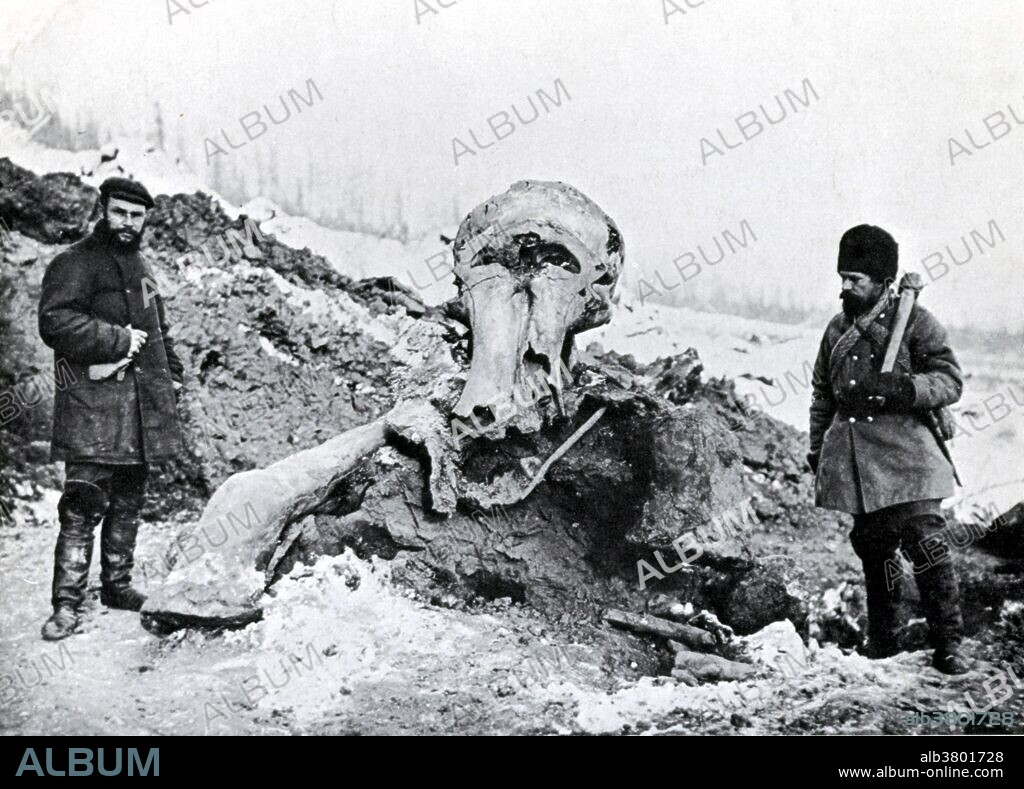alb3801728
Berezovka Woolly Mammoth, 1901

|
Añadir a otro lightbox |
|
Añadir a otro lightbox |



¿Ya tienes cuenta? Iniciar sesión
¿No tienes cuenta? Regístrate
Compra esta imagen

Título:
Berezovka Woolly Mammoth, 1901
Descripción:
Ver traducción automática
When the Berezovka mammoth was discovered sticking out of a river bank in Siberia, the flesh of its skull was partially eaten away by wolves, but its body and hugs front legs were perfectly preserved. E. W. Pfizenmayer was one of the scientists who recovered and studied the mammoth wrote: "Its death must have occurred very quickly after its fall, for we found half-chewed food still in its mouth, between the back teeth and on its tongue, which was in good preservation. The food consisted of leaves and grasses, some of the latter carrying seeds. We could tell from these that the mammoth must have come to its miserable end in the autumn." The Woolly Mammoth (Mammuthus primigenius), also called the tundra mammoth, is a species of mammoth. Unlike most other prehistoric animals, their remains are often not literally fossilized, turned into stone, but rather are preserved in their organic state. This is due in part to the frozen climate of their habitats, and to their massive size.
Crédito:
Album / Science Source / New York Public Library
Autorizaciones:
Modelo: No - Propiedad: No
¿Preguntas relacionadas con los derechos?
¿Preguntas relacionadas con los derechos?
Tamaño imagen:
4266 x 3066 px | 37.4 MB
Tamaño impresión:
36.1 x 26.0 cm | 14.2 x 10.2 in (300 dpi)
Palabras clave:
1901 • 1902 • 90S • AÑOS NOVENTA • BASES • BLANCO Y NEGRO • CENOZOICO • CIENCIA • CONSERVA • DECADA NOVENTA • DESCUBRIMIENTO • EXPEDICION • EXTINCIÓN • EXTINGUIDO • FAMOSO • FÓSIL • FOSILIZADOS • FOTO • FOTOGRAFIA • HERBIVORO • HISTORIA • HISTORICO • IMPORTANTE • MAMIFERO • MAMÍFEROS • MAMMUTHUS PRIMIGENIUS • MAMMUTHUS • MAMUT LANUDO • MAMUT • PALEOBIOLOGIA • PALEONTOLOGIA • PREHISTORIA • PREHISTORICO • RECONSTRUCCION • RUSSIAN • SIBERIANA • SIGLO XX • VERTEBRADO
 Pinterest
Pinterest Twitter
Twitter Facebook
Facebook Copiar enlace
Copiar enlace Email
Email
